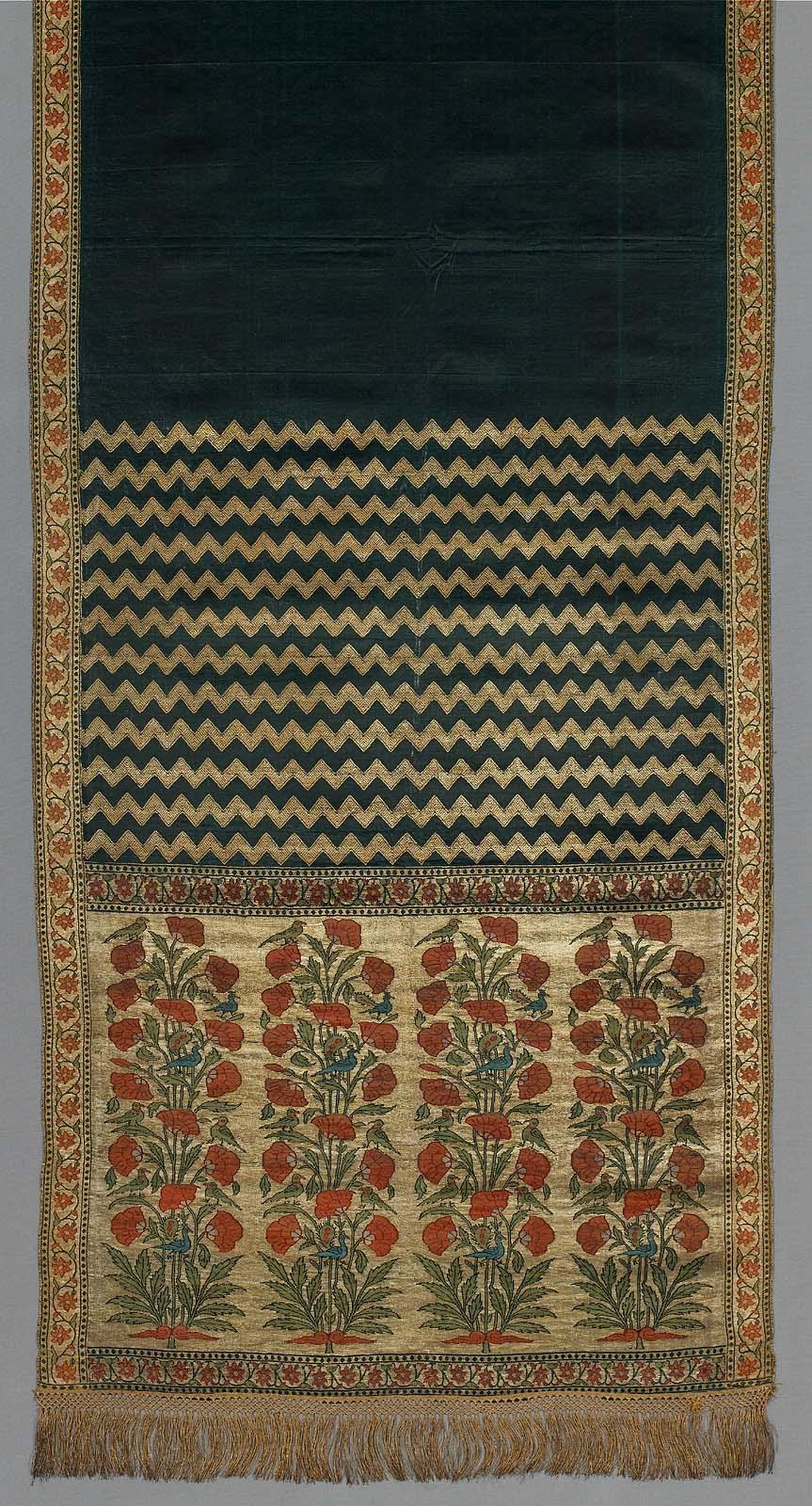Advanced Search
Man's court sash (patka)
Indian
Mughal dynasty
17th or early 18th century
Object Place: India
Medium/Technique
Cotton compound weave (twill and plain weave) with supplementary silk and metal-wrapped patterning wefts
Dimensions
330 x 52.1 cm (129 15/16 x 20 1/2 in.)
Credit Line
Gift of John Goelet
Accession Number66.858
CollectionsAsia, Fashion and Textiles
ClassificationsCostumes
DescriptionA dark blue sash of silk brocade is decorated on both ends with a series of ivory-colored chevron-patterned bands. The narrow edges and wide ends of the sash consist of multi-colored embroidered flowers on a gold brocade ground. In the pallaka (end) panels, four tall flowering plants, perhaps poppies, serve as perches for blue and green birds. Gold fringe falls from both ends.
An important element of male courtly attire in sixteenth-, seventeenth-, and eighteenth-century India, the patka or girdle played a symbolic and decorative role comparable to the necktie today. Often the most lavishly decorated component of a man's formal dress, the patka tied at the waist with the ends hanging toward the knees. The length of the ends and the position of the knot changed according to the fashions of the times. The ends of the patka, known as the pallakas, tend to be more elaborately and sumptuously ornamented than the central area, with lavish embroidery and metal thread. Because rulers often granted patkas as token of esteem, the sashes became symbols of political status as well as emblems of wealth and good taste.
An important element of male courtly attire in sixteenth-, seventeenth-, and eighteenth-century India, the patka or girdle played a symbolic and decorative role comparable to the necktie today. Often the most lavishly decorated component of a man's formal dress, the patka tied at the waist with the ends hanging toward the knees. The length of the ends and the position of the knot changed according to the fashions of the times. The ends of the patka, known as the pallakas, tend to be more elaborately and sumptuously ornamented than the central area, with lavish embroidery and metal thread. Because rulers often granted patkas as token of esteem, the sashes became symbols of political status as well as emblems of wealth and good taste.
Provenance1966, Nasli Heeramaneck (b. 1902 - d. 1971) and Alice Heeramaneck (b. 1910 - d. 1993), New York. 1966, John Goelet, Amblainville (Oise) France; 1966, gift of Goelet to the MFA. (Accession Date: October 11, 1966)



